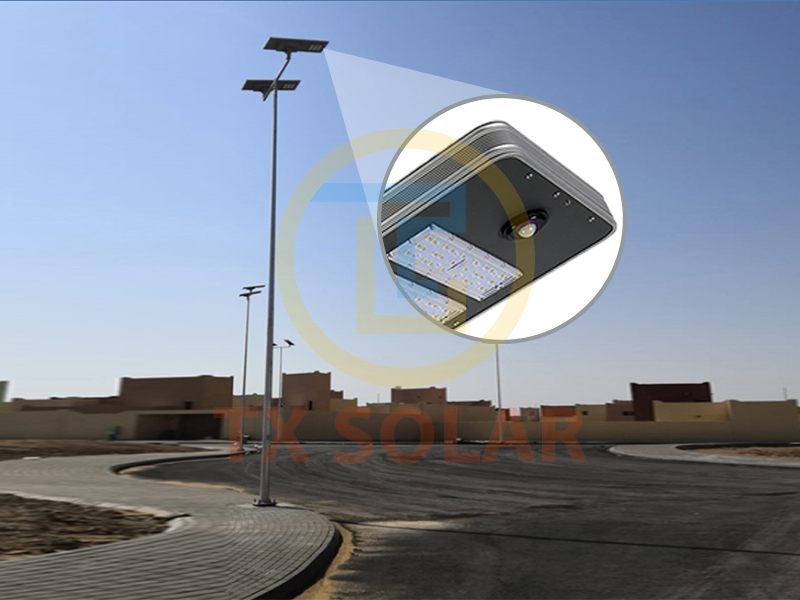In recent years, the adoption of solar street lights has surged due to the demand for sustainable and energy-efficient lighting solutions. Among the various innovations in this field, solar street lights with motion sensors have become a game changer. These advanced systems not only provide illumination but also significantly reduce power consumption, making them ideal for both urban and rural environments. This article explores how sensors can help solar street lights reduce power consumption and improve their overall efficiency.
Understanding Solar Street Lights
Solar street lights are stand-alone lighting systems that use solar panels to harness sunlight during the day, converting it into electricity to power LED lights at night. This renewable energy source eliminates the need for traditional grid electricity, making solar street lights an environmentally friendly choice. However, the challenge lies in optimizing their energy consumption to ensure that they operate efficiently throughout the night, especially in areas with limited sunlight.
Role of Motion Sensors
Motion sensors are devices that detect motion within a specific area. When integrated into solar street lights, these sensors can significantly improve energy efficiency. There are two main types of motion sensors used in solar street lights: passive infrared (PIR) sensors and microwave sensors.
1. Passive infrared (PIR) sensors:
These sensors detect changes in infrared radiation emitted by moving objects such as pedestrians or vehicles. When someone approaches, the sensor activates the light, illuminating the area only when necessary.
2. Microwave sensors:
These sensors emit microwave signals and detect the reflection of these signals from moving objects. They have a longer detection range and are more sensitive than PIR sensors, making them suitable for use in larger areas.
How sensors reduce power consumption
1. Adaptive lighting:
One of the main advantages of solar street lights with motion sensors is their ability to adjust lighting based on real-time activity. When no motion is detected, the lights dim or turn off completely, saving energy. For example, in a quiet residential area, the lights may run at a lower brightness until someone approaches, at which point they brighten to provide adequate lighting. This adaptive lighting approach can significantly save energy because the lights are not running at full capacity when not needed.
2. Extended battery life:
By reducing the time the lights are fully illuminated, motion sensors help extend the life of the solar cells. Solar street lights typically rely on rechargeable batteries to store the energy collected during the day. When the lights are operated at lower power levels, the battery discharges more slowly, allowing them to last longer between charges. This is particularly beneficial in areas with limited sunlight, where battery life is critical for stable performance.
3. Reduced maintenance costs:
Solar street lights with motion sensors not only save energy, but also reduce maintenance costs. Traditional street lights typically require frequent bulb replacement due to constant use. In contrast, solar street lights using motion sensors experience less wear and tear, resulting in fewer maintenance interventions. This not only saves money, but also minimizes the environmental impact associated with manufacturing and disposing of lighting components.
4. Smart city integration:
As cities evolve into smart city environments, the integration of solar street lights with motion sensors can play a vital role. These systems can be connected to a central management system that monitors energy consumption and adjusts lighting levels based on real-time data. For example, during peak pedestrian traffic hours, lights can remain fully illuminated, while during off-peak hours, lights can be dimmed or turned off. This level of control improves energy efficiency and contributes to the overall sustainability of urban infrastructure.
5. Environmental impact:
The reduced power consumption achieved by using motion sensors in solar street lights has a positive impact on the environment. By reducing reliance on fossil fuels and minimizing energy waste, these systems help lower carbon emissions. Additionally, the use of renewable energy is in line with global efforts to combat climate change and promote sustainable development.
Conclusion
Solar street lights with motion sensors represent a significant advancement in energy-efficient lighting solutions. These sensors play a vital role in minimizing power consumption by enabling adaptive lighting, extending battery life, reducing maintenance costs, and facilitating smart city integration. As cities continue to seek sustainable alternatives to traditional street lighting, solar street lights with motion sensors stand out as a practical and environmentally friendly option. The future of urban lighting is bright, and with continued innovation in solar technology and sensor applications, we can expect even greater advances in energy efficiency and sustainability.
Post time: Nov-13-2024

